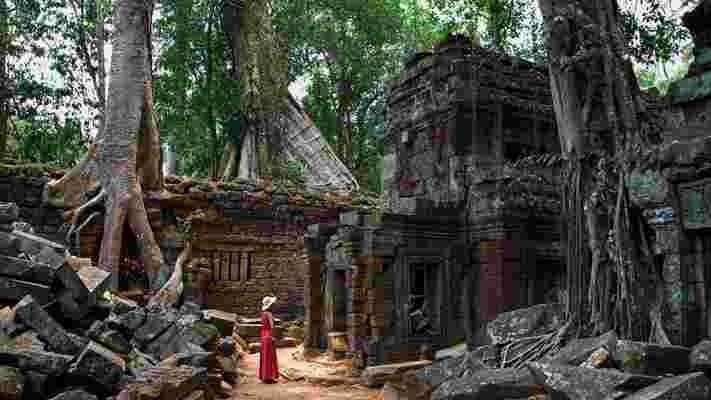With its labyrinth of defensive walls and moats, magnificent five-spire towers, weather-worn sandstone statues and inspired pyramidal temples, Cambodia’s vast Angkor Wat (“Temple City”) complex isn’t just a proud symbol of national culture, but one of the greatest expressions of ancient architecture ever built.

Conceived roughly 900 years ago and spanning some 400 sq km, it’s also the single largest religious monument in the world. Yet, if you wander a few kilometres away and follow a small side street in Siem Reap to a hand-painted sign reading “Angkor Wat in Miniature”, you’ll find one of the smallest.
Inside a cottage courtyard, architect and sculptor Dy Proeung has painstakingly recreated elaborate models of Angkor Wat’s rose-pink sandstone towers, soaring pediments and defensive moats, all built to scale. The inspired museum-residence represents Proeung’s life’s work, and the story behind its creation is just as remarkable as the miniature Temple City itself.
As a young man, Proeung was enamoured by Angkor Wat and drew detailed drawings of the temple complex. After graduating from the Royal University of Fine Arts in Phnom Penh, he landed his dream job working with the Angkor Conservation. Then in 1975, Cambodia’s Khmer Rouge came to power, and for the next four years, the totalitarian regime executed one of the bloodiest genocides of the 20th Century, killing as many as two million people . Because Proeung was considered an artist and intellectual, his life was at risk.
Rather than burn his drawings and other evidence of his identity to protect himself during home raids by the regime, Proeung hid the documents deep in the forest behind the cottage where his mini-Angkor Wat museum now stands. Proeung was eventually imprisoned, but escaped execution thanks to an intervention by a family member who worked for the regime. Once the Khmer Rouge was toppled in 1979, Proeung dug up his scale drawings of Angkor Wat and set about meticulously building his miniature city bit by bit for roughly 20 years.
Today, much like the original complex 6km away, Proeung’s creation attracts tourists from all over the world and stands as a stunning symbol of Cambodia’s architectural genius and its enduring cultural heritage.
This video is part of BBC Reel’s Hidden Histories playlist .
Join more than three million BBC Travel fans by liking us on Facebook , or follow us on Twitter and Instagram .
If you liked this story, sign up for the weekly bbc.com features newsletter called "The Essential List". A handpicked selection of stories from BBC Future, Culture, Worklife and Travel, delivered to your inbox every Friday.
